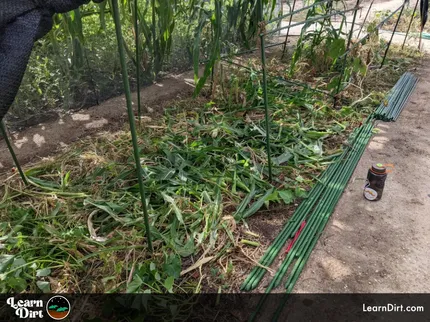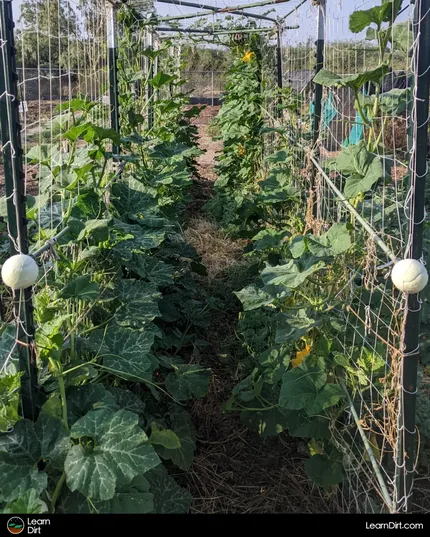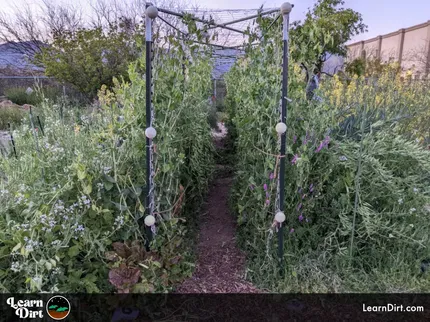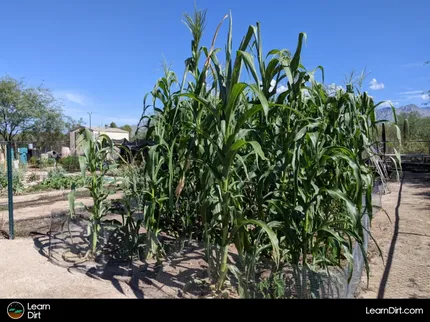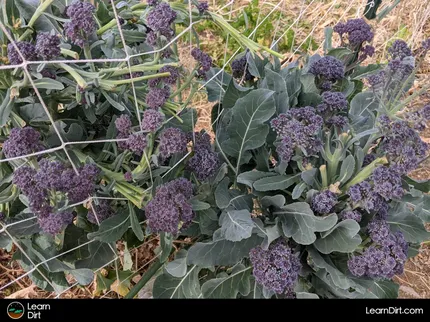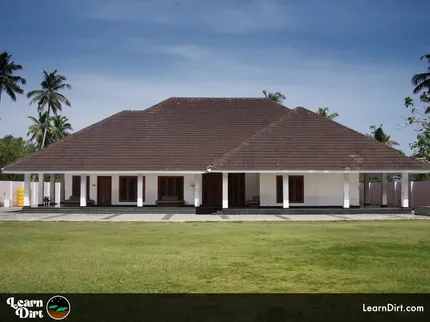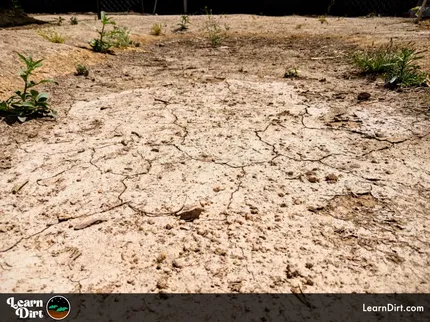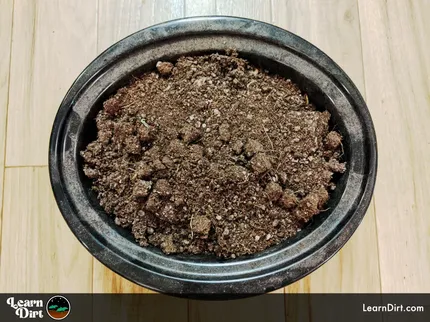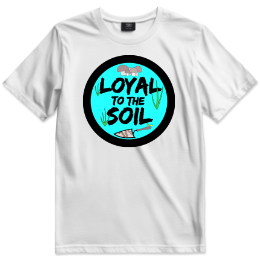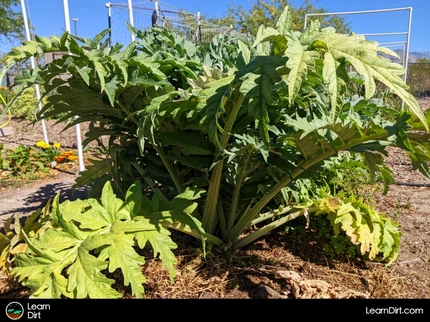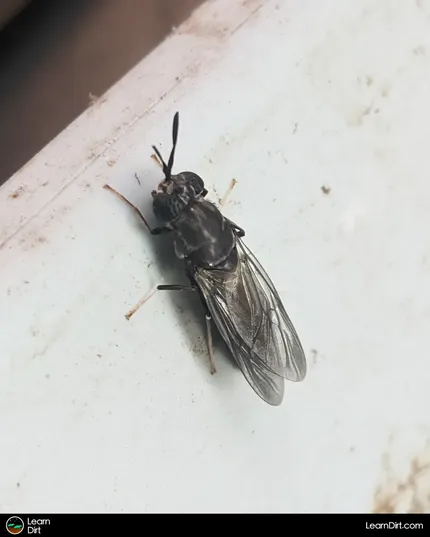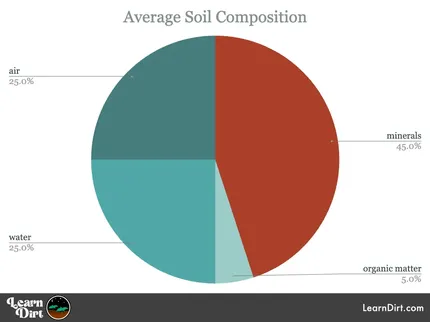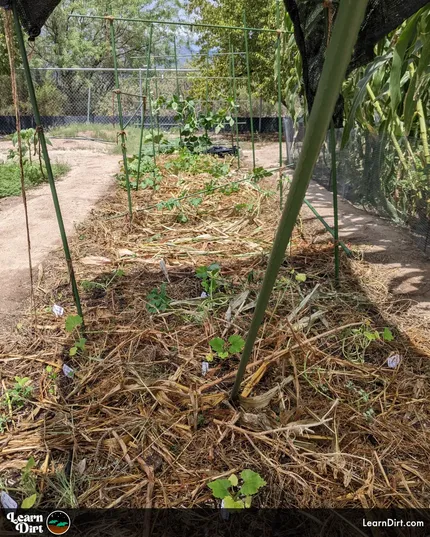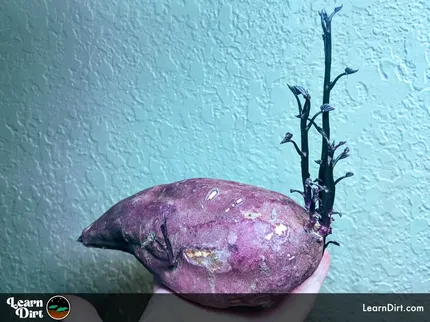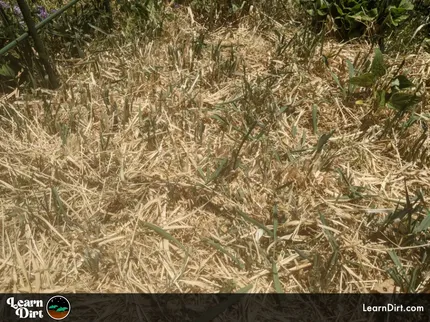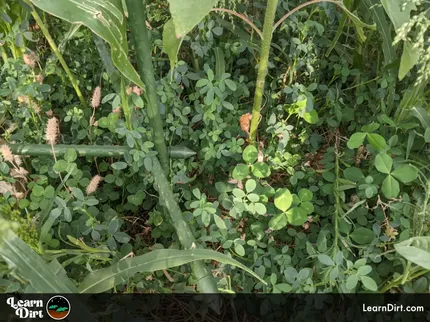Table of Contents
- Climate Strengths and Weaknesses
- Use Water Wisely
- Build Incredible Soil
- Grow Native Species for Increased Garden Biodiversity
- Final Thoughts...
* Our articles never contain AI-generated slop *
If you're new to gardening in Arizona, this guide is for you. We'll outline some of the basics of organic gardening, as well as special considerations specific to growing in the desert.
While we're focused on the Southern Arizona lowlands here, this info can be adapted for Northern AZ or higher elevations as well. Much of it will still apply. Let's jump into it!
Climate Strengths and Weaknesses
Like any climate, the Sonoran desert has its unique challenges and its gifts. It's important to understand the strengths and weaknesses of this climate so you'll have a better idea of how to work with it. You'll also be able to adapt tips and instructions from gardeners in other regions better when you know how your growing environment differs from the average:
Disclaimer: This post may contain affiliate links. Refer to the privacy policy for more information.
- Abundant Sunlight
- 365 day/year growing season
- Near-infinite sand to help with soil drainage
- Rarely ever a hard-freeze
- Low humidity means fungal diseases are rare
- Low humidity means plants can be grown closer together
- Far fewer pests than wetter climates
- Extreme heat
- Overabundant sunlight may burn plants
- High rate of evapotranspiration
- Water is scarce
- Native soil is highly alkaline
- Native soil has <1% organic matter content
- Native soil has almost no moisture holding capacity
- Soil infiltration rate for water is very low
- Erosion is a big issue during monsoon season

Use Water Wisely
I don't need to tell you that water is an extremely precious resource in Arizona.
Growing your own food can use a lot of water, so doing whatever you can to conserve it in your garden is paramount.
Install an irrigation system and familiarize yourself with how to use and repair it. You won't get far without one and you'll never be able to leave the garden for more than a day or two if you're stuck watering it by hand. Proper irrigation will ensure water is applied directly where it's needed for your plants to thrive.
Drip lines are recommended rather than overhead watering for veggie gardens in the desert, because of the high evaporation rate. Soaker hoses are also a great alternative.
Install drip lines as soon as possible if you have any intention for your Arizona garden to thrive.
Mulching over your drip lines with hay, straw, chop & drop, wood chips, or unfinished compost will help reduce water lost to evaporation.
To learn more, check out this Garden Irrigation guide.
Join The Grower's Community
A free & open space for anyone who is passionate about cultivation 🌱
Check It Out!
Build Incredible Soil
One of the keys to success in our harsh climate is focusing on soil-building techniques which incorporate regenerative gardening practices.
Because the native soil is so poor, it must be improved dramatically in order to be able to garden. If you can get this one element right, your garden will absolutely thrive.
Remember that soil is the foundation upon which a garden is built. It's worth taking your time to lay a strong foundation, patiently. Don't rush something as important as soil, but rather think long-term about how great your soil will be in 5 or 10 years if you make steady investments into it each season.
Let's jump into some specific soil-building techniques so you can get an idea for how soil remediation works:
Test Your Soil
Without knowing some specifics about the native soil in your garden or on your land, it's going to be difficult to understand what it's lacking and what it needs.
Do yourself a great favor and perform a preliminary soil test before you even start your garden. Not only will this be prescriptive for amendment needs but it will give you a benchmark against which you'll be able to measure just how far you've come.
A good soil test can tell you the pH level, nutrient content, and organic matter percentage of your soil. This info is extremely helpful in guiding your decisions about what amendments and treatments your soil will need.
I like these kits here - you send a sample to the lab and have a full panel of results online within a week.
Finally, you can easily perform a soil composition test for free to learn about your soil's texture. You likely already have what you need to do that one.
Utilize Cover Crops
Cover crops and soil improvement go together like strawberries and cream.
There is no less-expensive way to improve the quality of lots of soil than with cover crops. If you don't plan to provide all your garden soil in bags and what you can compost, you'll want to think about cover crops to do the bulk of the work.
Grab some cover crop seed such as legumes and grasses which can "fix" nitrogen in the soil, suppress weeds, and provide habitat for beneficial insects.
As your cover crops grow, they can be chopped and dropped and left to decompose in place, adding organic matter to the soil.
This gives you a source of mulch to cover and protect soil, feed the microbiome, and ultimately break down into the next layer of soil.
To learn more, check out this Cover Crop guide.
Avoid Heavy Tillage
We've come a long way since the days of heavy tillage. Advancements in soil microscopy and soil science are quite clear that there is almost nothing worse for soil than disturbance.
Rather than thinking of the soil as an inert medium containing nutrients to be extracted by the plow, modern regenerative paradigms understand it as a complex interconnected community to be respected.
Heavy tilling disrupts the delicate natural soil structure, and directly causes widespread die-off of soil microbes. It exposes worms and other macroorganisms to birds and predation. Birds follow the plow and readily take the soil critters you depend on for success.
Beneficial nematodes which may be UV sensitive are also disturbed and killed when exposed to sunlight. Nitrogen and carbon off-gass at alarming rates when soil is plowed - nutrients which you painstakingly worked to add to the soil previously. This is just the tip of the iceberg as far as the detriment of tilling.
Instead, I'd encourage you to adopt more modern no-till gardening techniques. This is a major aspect which sets modern organic methodologies apart from oldschool pre-industrial organic methodologies, the plow is now obsolete.
Dig Cool Merch?
Look towards lasagna gardening, hugelkultur, sheet mulching, and chop & drop for an understanding of how to work with soil without tilling it.
All of these methods involve layering organic matter on top of the soil in a way which replicates what happens in a forest. Afterall, the best soil on the planet is always found in forests. If we can replicate in our gardens how soil is created in forests, our land will absolutely thrive!
To learn more, check out this No-Till guide.
If you're not ready to go cold-turkey on the tillage yet, consider utilizing a broad fork as a way to aerate your soil and provide channels for water to flow down as you transition to low and no tillage.
Start Composting Immediately
Composting is absolutely essential for building great soil. Divert your food waste, yard and garden trimmings into incredible quality nutrients.
If you have a lot of cardboard, consider investing in a heavy-duty shredder. Cardboard shreddies make fantastic compost, and their carbonaceous nature will help balance out wet nitrogenous food scraps.
Just like Arizona gardens really benefit from irrigation, open compost systems in Arizona really benefit from irrigation as well.
Try not to ever let your compost dry out completely, as microbial activity will slow to a crawl. If the microbes and macroorganisms in your compost die back significantly from lack of water, it will take time for them to bounce back. Stay ahead of it by always keeping compost moist. I like irrigating my compost so this happens on autopilot.
To learn more, check out this Composting guide.
Grow Native Species for Increased Garden Biodiversity
When your intention is to grow veggies, it's easy to overlook the importance of accompanying native species.
While native species may not be on top of your radar, understand that the local predator insect populations are specifically adapted to grow and thrive in conjunction with native plants.
Native predatory insects are arguably the best way to balance pest populations in your garden. Befriend them, for you'll need their allegiance in order to flourish.
Because native plants provide food and shelter for the native beneficial insects, you can see why it's so important to devote some of your time and space to growing native plants even if all you really want are herbs & veggies.
In Arizona, we can easily grow native species around the perimeter of our vegetable gardens, where they may benefit from increased soil quality and moisture.
Without the need for irrigation or watering directly, and with practically zero nutrient needs, native plants will always the easiest plants to grow.
Final Thoughts...
Hopefully this guide helps you to get started building healthy soil, and growing your own organic garden in Arizona.
I encourage you to dig through the website for more resources, there are numerous guides to help you learn more advanced desert gardening techniques and mindsets.
Remember that soil building is a long-term process, and it may take several seasons to see significant improvements in your soil.
Try not to get too frustrated when you don't see immediate results. Reaffix your sights on your long-term goal, and focus on the steps that you can take each week to gradually improve your soil quality.
Slowly, your soil and ecosystem will transform if you're diligent and patient enough to allow it to unfold in its own time.
Happy gardening!
That's all for now, thanks for reading!
If you have any questions, comments, or would like to connect with fellow gardeners, head on over to the forum and post there.








![Black Dirt Live Again [Green]](/media/product_images/black-dirt-live-again-[green]_sticker_260x260.png)


